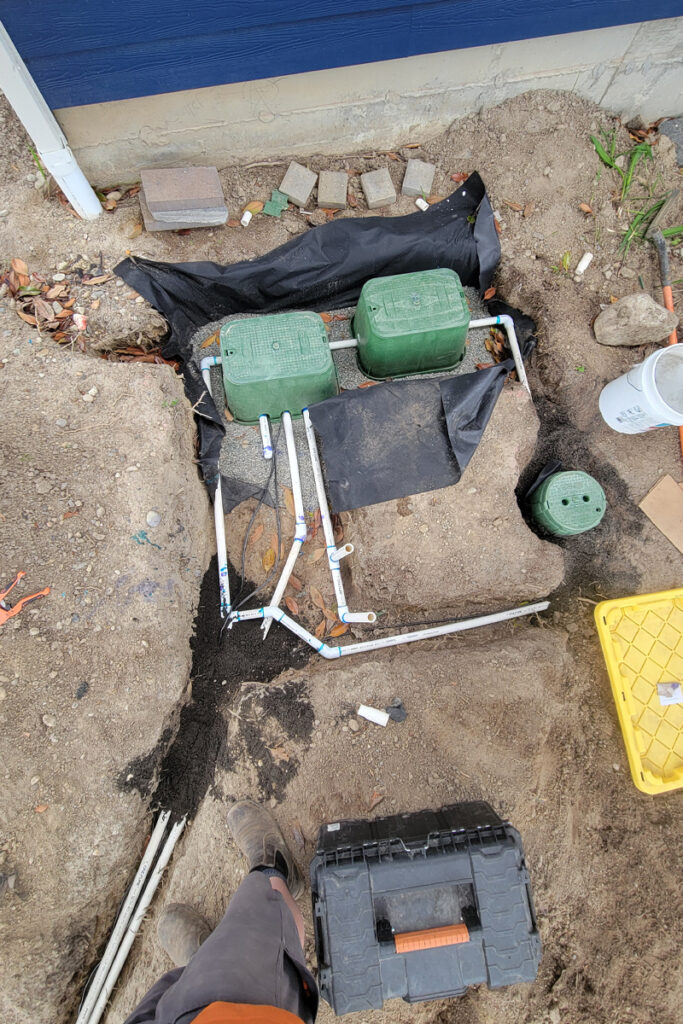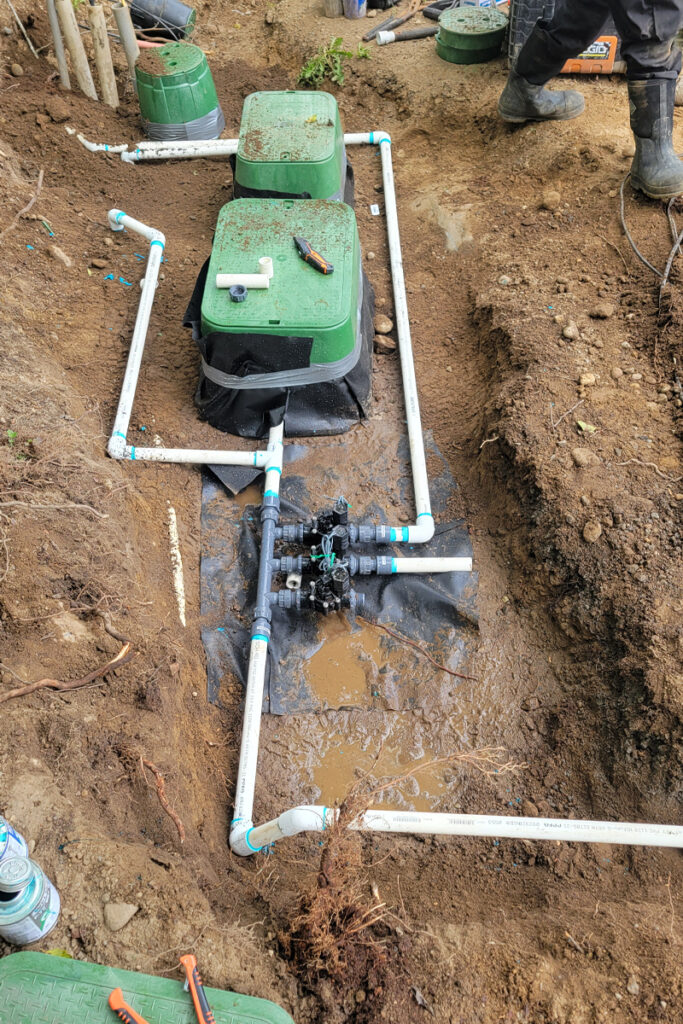 Living in the Pacific Northwest, especially around the Kitsap Peninsula, you know all too well how tricky it can be to keep your lawn looking its best. One day it’s raining, and the next day the sun is shining—this unpredictable weather can make managing your irrigation system a headache. You’ve likely invested in an irrigation system to keep things simple, but instead, it sometimes feels like it’s adding more stress than solving problems.
Living in the Pacific Northwest, especially around the Kitsap Peninsula, you know all too well how tricky it can be to keep your lawn looking its best. One day it’s raining, and the next day the sun is shining—this unpredictable weather can make managing your irrigation system a headache. You’ve likely invested in an irrigation system to keep things simple, but instead, it sometimes feels like it’s adding more stress than solving problems.
Maybe you’ve noticed brown patches on your lawn, or perhaps your plants are looking a little too soggy despite all the effort to get everything just right. If you’re wondering why your irrigation system seems to have a mind of its own, you’re not alone. Many homeowners in the Pacific Northwest face similar issues. At Brookside Landscape and Design, we’ve worked with enough irrigation systems in this climate to understand the unique problems that can crop up—and trust us, it’s not your fault. The Pacific Northwest is just an entirely different ball game when it comes to lawn care.
So, let’s break down some of the most common problems with irrigation systems in our rainy, sometimes unpredictable corner of the world, and more importantly, what you can do about them.
- Overwatering Due to Rain
The problem:
Here in the Pacific Northwest, rain is a given. While this means you might not have to water your lawn as much as someone living in, say, Arizona, it also creates its own set of challenges. Your irrigation system is likely set on a timer, and unless you’ve got a smart system that senses rainfall, it’ll keep running regardless of the weather. The result? Oversaturated soil, waterlogged plants, and a lawn that looks like a marshland rather than a green paradise.The solution: Investing in a rain sensor or a weather-based smart irrigation system can make all the difference. These systems detect rainfall and automatically adjust or shut off your sprinklers when enough water is already present. If you’re not ready for that upgrade, at least consider manually adjusting your timer based on the weekly forecast.
- Clogged Sprinkler Heads
The problem:
All those leaves, dirt, and debris that fall during our long, rainy seasons can easily clog sprinkler heads. This leads to uneven water distribution—some areas of your lawn get too much water, while others barely get any at all. Before long, you’ll notice dry patches or, worse, standing water in certain spots, making your lawn look uneven and unhealthy.The solution: Regularly inspecting and cleaning your sprinkler heads is essential to keep everything running smoothly. You don’t have to do this daily or even weekly, but it’s a good idea to check on your system once a month, especially during fall and early spring when debris tends to build up. At Brookside, we’ve seen a little bit of regular maintenance go a long way in preventing bigger problems down the line.
- Uneven Watering Due to Sloped Terrain
The problem: If your yard has any kind of slope (and in Kitsap, many do), you’ve probably noticed that water tends to pool at the bottom while the top of the slope stays relatively dry. This is because water naturally flows downhill, and unless your system is set up to account for this, it’s impossible to get even coverage.
The solution: You might need to adjust your irrigation system’s settings or upgrade to a system that includes flow control for sloped areas. Drip irrigation can also be helpful in these cases, as it allows water to seep slowly into the ground, reducing runoff and making sure the plants at the top of the slope are getting enough water. A professional can assess whether your system needs tweaking, but being mindful of how your terrain impacts watering is the first step.
- Incorrect Water Pressure
The problem: In some cases, your system might be experiencing water pressure issues—either too much or too little. Low pressure means that water isn’t reaching all areas of your lawn effectively, leading to dry patches. High pressure can cause the sprinklers to mist, with the water evaporating before it even hits the ground, wasting water and leaving your plants thirsty.
The solution: You can often fix this by installing a pressure regulator to control the flow of water. If you notice signs of pressure problems—such as sprinklers that barely spray or ones that create a mist instead of a steady stream—it’s time to check the system’s pressure and make adjustments as needed. Sometimes the solution is as simple as adjusting a valve; other times, you might need professional help.
- Shallow Root Systems
The problem: If your irrigation system is running too frequently or for too short a time, it can lead to shallow root growth. The water never penetrates deeply enough into the soil, so the roots stay close to the surface. This makes your lawn more susceptible to drought stress, even in a climate as rainy as ours. When the rain stops for a few days, your lawn might quickly dry out because the roots aren’t deep enough to access water further down in the soil.
The solution: Instead of frequent, short watering cycles, aim for less frequent but deeper watering. This encourages the roots to grow deeper into the soil, where they can access moisture even during dry spells. You might also want to consider aerating your lawn, which allows water to penetrate deeper into the ground.
 Soil Compaction
Soil Compaction
The problem: Over time, the soil in your yard can become compacted, especially with all the rain we get in the Pacific Northwest. Compacted soil makes it difficult for water to absorb properly, leading to puddles, runoff, and areas of your lawn that never seem to get enough water.
The solution: Regular aeration of your lawn can help relieve soil compaction. By pulling small plugs of soil out of the ground, you allow air, water, and nutrients to reach deeper into the soil. This can make a huge difference in how well your irrigation system performs and how lush and healthy your lawn looks.
- Winterizing Your System (Or Not!)
The problem: If you haven’t properly winterized your irrigation system, you could be in for a nasty surprise when spring rolls around. Any water left in the pipes can freeze, expand, and crack your system’s components. Even in our relatively mild winters, this is a real risk.
The solution:Winterizing your system is a must-do every fall. This involves draining any leftover water and, if possible, blowing out the lines with compressed air to make sure there’s no moisture left to freeze. If this seems like more than you want to handle, Brookside Landscape and Design offers winterization services to ensure your system is safe and sound until it’s time to turn it back on in the spring.
- Outdated Systems or Controllers
The problem: Sometimes, the issue isn’t with your irrigation system itself but with the technology controlling it. If you’re using an older system that doesn’t account for weather changes, soil moisture levels, or water pressure, you’re likely wasting water and money.
The solution: Upgrading to a smart irrigation controller can save you time, effort, and water. These controllers adjust watering schedules based on real-time weather data, ensuring your lawn gets the right amount of water no matter what the Pacific Northwest throws at us. While there’s an upfront cost, the long-term savings in water bills and system longevity make it worth the investment.
Conclusion: Keep Your Lawn Thriving in the Pacific Northwest
Irrigation systems are a lifesaver when it comes to maintaining a lush, green lawn and landscape, but they aren’t without their challenges—especially here in the Pacific Northwest. Whether it’s overwatering during a rainy spell, clogged sprinkler heads, or sloped terrain creating runoff, there are plenty of factors that can throw your system off balance.
But the good news? Most of these problems have simple fixes, and by addressing them, you’ll not only save yourself a lot of frustration, but you’ll also ensure your lawn is the envy of the neighborhood.
At Brookside Landscape and Design, we’ve helped many Kitsap Peninsula homeowners troubleshoot and perfect their irrigation systems, and we’re always here if you need a hand. Whether it’s regular maintenance or a complete system overhaul, we’ve got the expertise to keep your lawn looking its best year-round.

